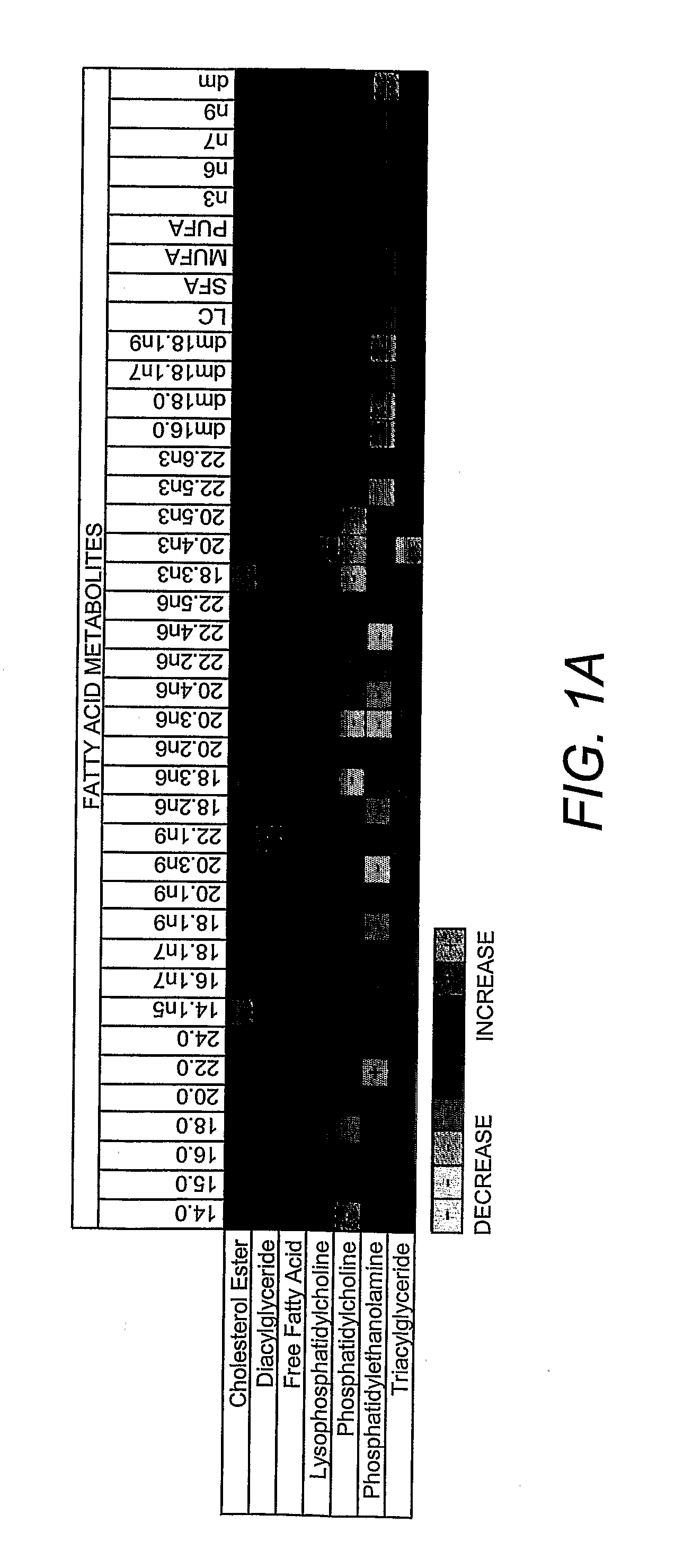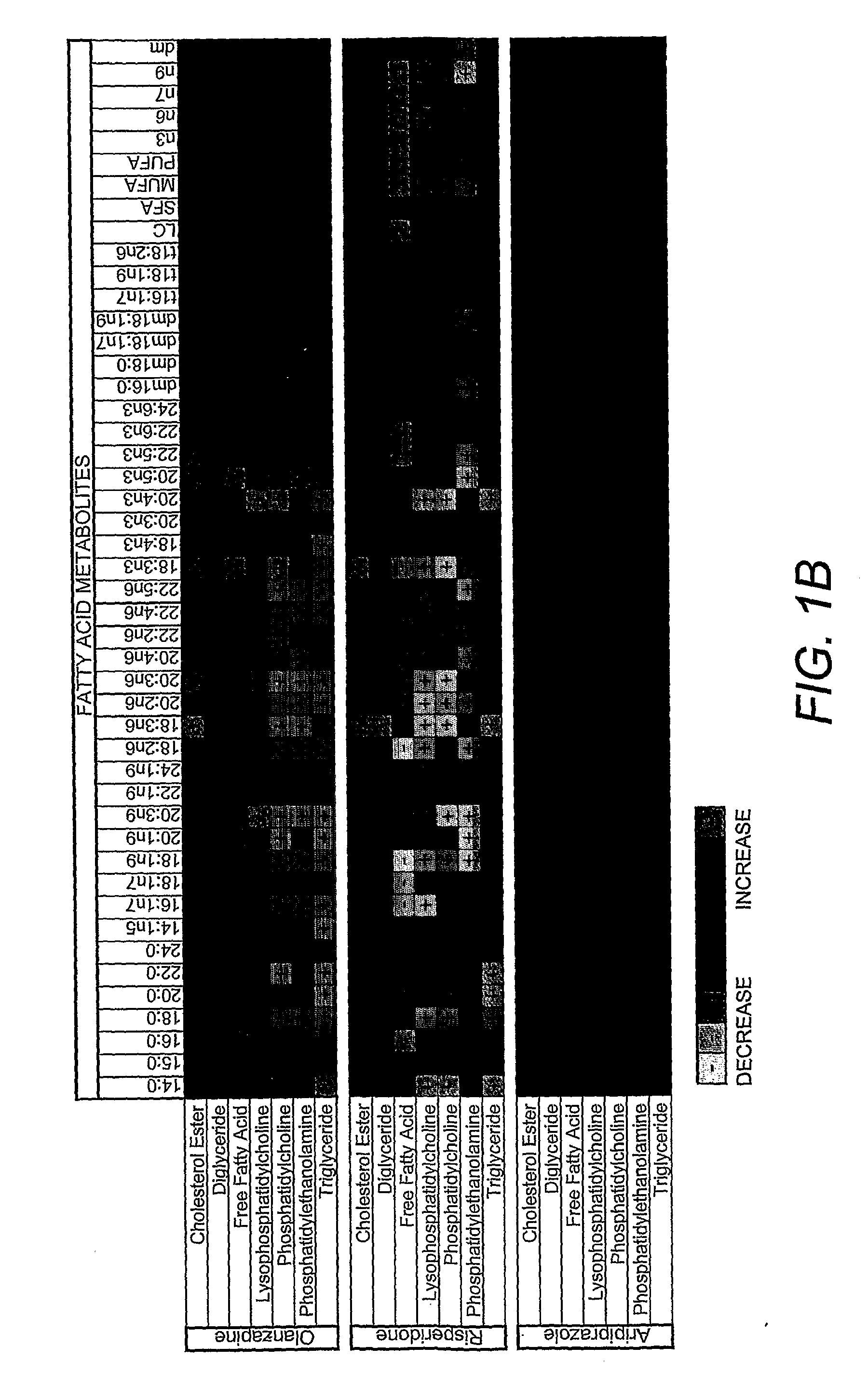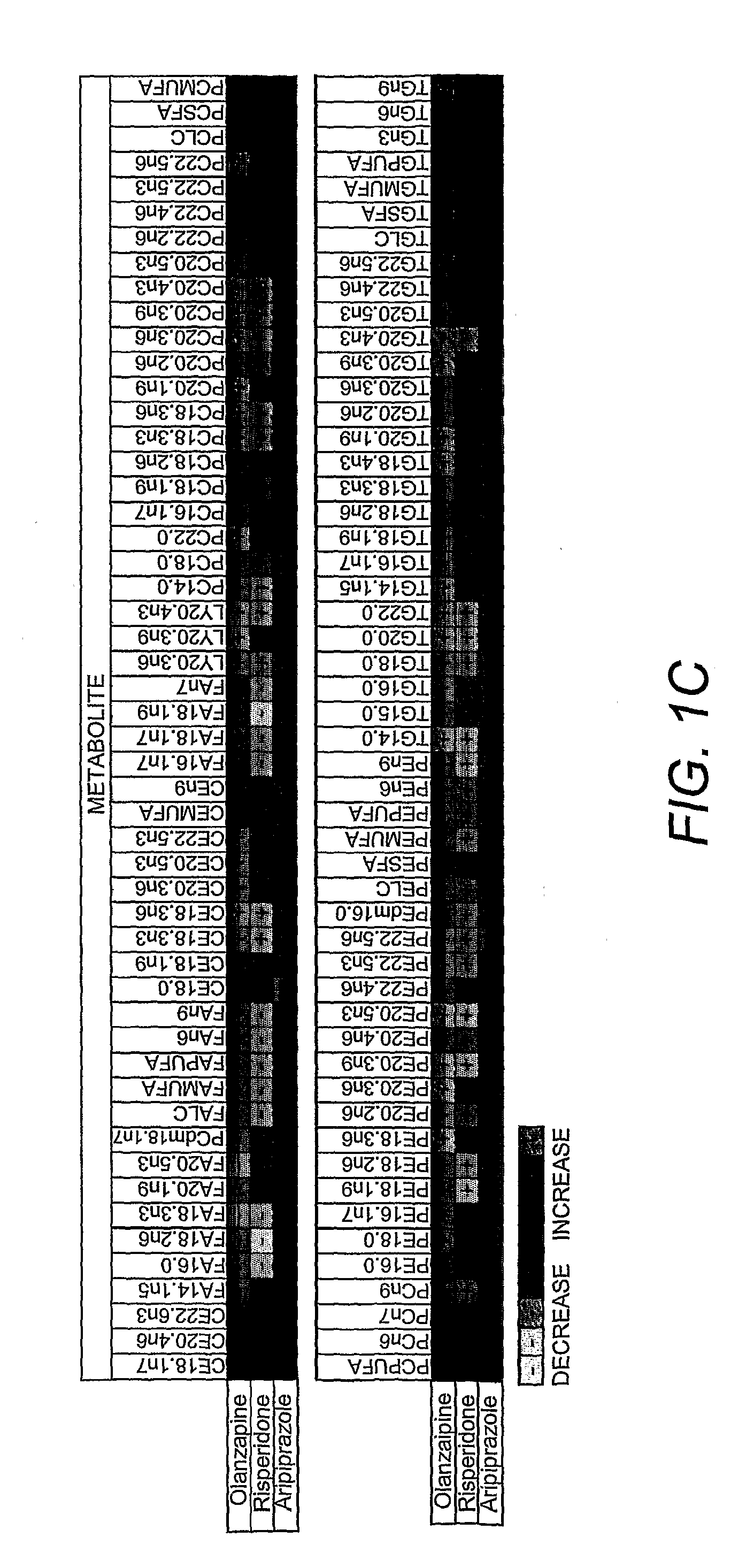Lipidomics approaches for central nervous system disorders
a central nervous system and lipidomics technology, applied in the field of lipidomics, can solve the problems of metabolic syndrome, only partially effective antipsychotics, and inability to optimally treat patients,
- Summary
- Abstract
- Description
- Claims
- Application Information
AI Technical Summary
Benefits of technology
Problems solved by technology
Method used
Image
Examples
example 1
Methods and Materials
[0295]Human Subjects. Fifty male and female patients were recruited in two studies for metabolic profiling (Table VI and Table VII for demographics). Subjects ranged in age from 18 to 60 years and met the following inclusion criteria: a) DSM-IV criteria for schizophrenia, schizophreniform disorder, or schizoaffective disorder; b) newly hospitalized for a psychotic exacerbation in the setting of no antipsychotic treatment for at least 3 weeks prior to admission; and c) provided signed informed consent. Patients with psychoses due to psychoactive substance abuse or an underlying medical condition were excluded. Patients who were receiving treatment for diabetes mellitus or hyperlipidemia were also excluded. The subjects were recruited in two groups and samples were collected pre- and post-treatment with antipsychotics—Study I consisted of 27 patients with schizophrenia (risperidone N=9, olanzapine N=14, aripiprazole N=4); and Study II consisted of 23 new patients ...
example 2
Baseline Analyses
[0306]At baseline, and prior to administration of antipsychotic medications, the level of eight lipid classes between 27 schizophrenic patients (Study 1) and 16 healthy controls were compared. These lipid classes were CE, FC, TG, DG, FA, LY, PC, PE. The heatmap (FIG. 1A) shows fatty acids within the eight lipid classes that are significantly different between patients with schizophrenia and controls (see statistics in Example 1). The column headers display the fatty acid and the row headers the family of fatty acids present in each lipid class. Metabolites significantly higher in patients are indicated as an increase (+), while metabolites significantly lower are indicated as a decrease (−). With the exception of PE class, which was significantly decreased in schizophrenic patients, all other lipid class totals did not differ significantly between the two groups (FIG. 1A). Within the PE class there were decreases in the n3, n6, and n9 fatty acid family moieties and ...
example 3
Antipsychotic Effects
Study I
[0307]Risperidone Effects. The effect of risperidone on lipids within eight major classes is shown in the heatmap of FIG. 1B. Heatmaps for drug effects described below were created by testing the significance of each treatment (post-treatment vs. pre-treatment) on the metabolite concentration using a paired Student's t-test as described in Example 1. If the treatment effect was significant at alpha of 0.05, a mean percentage difference in the concentration of the metabolite induced by treatment was calculated. Metabolites significantly increased by treatment are indicated by squares marked with a “+”, while metabolites significantly decreased by are indicated by squares marked with a “−”.
[0308]Risperidone treatment increased concentrations of two phospholipid classes PE and PC, which were reduced pre-treatment in schizophrenic patients (p=0.005, 0.02) (FIG. 1B). There was also an increase in LY class (which is derived from PC). The three phospholipid clas...
PUM
| Property | Measurement | Unit |
|---|---|---|
| time | aaaaa | aaaaa |
| time | aaaaa | aaaaa |
| time | aaaaa | aaaaa |
Abstract
Description
Claims
Application Information
 Login to View More
Login to View More - R&D
- Intellectual Property
- Life Sciences
- Materials
- Tech Scout
- Unparalleled Data Quality
- Higher Quality Content
- 60% Fewer Hallucinations
Browse by: Latest US Patents, China's latest patents, Technical Efficacy Thesaurus, Application Domain, Technology Topic, Popular Technical Reports.
© 2025 PatSnap. All rights reserved.Legal|Privacy policy|Modern Slavery Act Transparency Statement|Sitemap|About US| Contact US: help@patsnap.com



